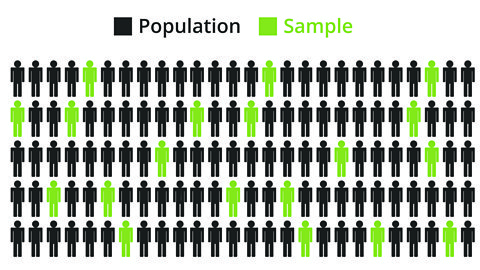Key facts about market segmentation
Market segmentation divides a business's target market into groups based on:
- age
- gender
- income
- geography
- lifestyle
This helps businesses develop and market products more effectively, targeting the right customers to meet their needs and boost sales.
Identifying and understanding customers
It is very important for a business to identify and understand their customers. Businesses use a process called segmentation to help them achieve this. How are markets segmented?
What is market segmentation?
Market segmentation is the process of splitting a business’ target market into different groups. Businesses use these groups to make it easier for them to develop products aimed at certain people and to help them target their marketing. Small businesses typically split up their target market based on age, gender, income, geography and lifestyle.
What is demographic segmentation?
Age and gender fall under a wider type of segmentation known as demographic segmentation, which considers the characteristics of people. Businesses consider the demographics of the people to whom they want to market their products. For example, a make-up business might target females aged 19–35 in the UK for a certain type and style of make-up. Other examples include toys for children, pension plans for people aged over 60 and cars for people aged 17 or above.

What is income segmentation?
Income segmentation considers how much people earn and how much disposable incomeMoney available for spending and saving once taxes have been deducted. they have. This is extremely important for certain products. For example, a business selling high-end luxury cars or expensive jewellery would need to target people with a high level of income. However, a budget brand of baked beans may target customers with a low level of income.

What is geographical segmentation?
Splitting up a market by location is also known as geographical segmentation. This is used to split up a target market based on where people live. A business may choose to target customers in its local area, or it may consider what types of products would sell in specific locations. For example, surfers in Portrush may be more interested in buying surf boards than people living in Omagh.
What is lifestyle segmentation?
Lifestyle segmentation considers what sorts of lives the people in a business’ target market lead. This may take into account hobbies, sporting interests and other things customers do in their spare time. For example, a camera equipment retailer may want to target customers who are interested in photography, or a cricket bat manufacturer may want to target people with an interest in cricket.

Why do businesses segment the market?
The main aim of market segmentation is to divide mass markets. Businesses do this to target the right products at the right people, to satisfy customer needs, and to increase sales and profits.
Dividing mass markets means that businesses split customers into subcategories to provide them with a focus when developing products and undertaking marketing activities.
Targeting the right products at the right people
Targeting the right products at the right people is very important. Getting this right means that businesses are less likely to waste money on marketing and promotion.

| Type of segmentation | Example |
| Age | • Toys being aimed at children |
| Gender | • Hair products and make-up • Clothing |
| Income | • Cars • Holidays • Clothing • Some food items |
| Geography | • Foods having a reputation for being from different locations • Selling appropriate footwear near a popular walking destination like the Mournes |
| Lifestyle | • A rugby club only targeting rugby fans • A fishing equipment brand only targeting anglers • Holiday companies targeting people looking for holidays |
Satisfy customer needs
Customers have different needs and requirements that must be satisfied by businesses. Customer needs change constantly so it is important that businesses are able to keep up with and match these needs consistently.
An example of a customer need might be a segment of the market requiring low-cost food and drink. A business may set up aiming to meet this need.
Increase sales and profits
By targeting specific customer groups, businesses can increase their sales and profits. Segmenting products means that businesses are likely to create products and services that have a higher chance of selling. For a small business, using segmentation to target a smaller group of customers could give them a higher chance of business survival.
Try the market segmentation quiz
Final checks
What is one reason why businesses use market segmentation?
One reason businesses use market segmentation is to target the right products at the right people.
This helps ensure that marketing efforts are focused and reduces the likelihood of wasted resources, as businesses can tailor products and promotions to meet the specific needs of different groups.
More on Market Research
Find out more by working through a topic
- count5 of 8

- count6 of 8
